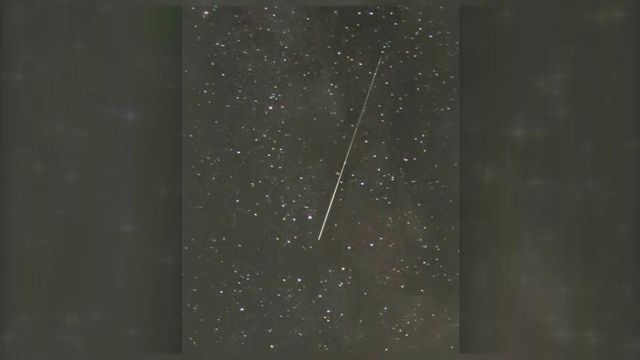Perseid meteor shower visible, but may be hard to see
The Perseid meteor shower is expected to peak before dawn on Monday, Tuesday and Wednesday.
Posted — UpdatedThe Perseid meteor shower is expected to peak before dawn on Monday, Tuesday and Wednesday.
Normally, the pre-dawn hours during those days are the best time to see meteors streak across the sky, but not this year. Perseid peak falls immediately after Sunday’s “supermoon,” when the full moon occurs at perigee in its orbit around the Earth, the closest and brightest full moon of the year.
The moon will rise shortly after sunset early this week and remain visible all night, making meteors more difficult to see.
Meteors appear to radiate from the northeast from the constellation Perseus but may appear anywhere in the sky. There are seven other meteor showers underway this week ranging from the Kappa Cygnids, which might produce a single meteor per hour under optimal conditions, to the Delta Aquariids, which peaked last week at about 15 per hour. The Perseids have produced up to 100 meteors per hour at speeds of 37 miles per second in past years.
Your best views are between midnight and a few hours before sunrise (around 6:30 a.m.) as Earth rotates into the stream of debris left behind by comet 109P/Swift-Tuttle. The view improves as the moon sets around 3 a.m. Wednesday morning. The moon will set about an hour later each subsequent day.
Beginning Monday, your best chances are at a more family friendly evening time from shortly after sunset (around 8:45 p.m.) through moonrise about an hour later. The moon also rises about an hour later each subsequent evening, giving more opportunity to see meteors before the nearly full moon washes out the sky. Also take a moment to look low on the southwest horizon for Saturn and just below and to the right for Mars.
Our next major meteor shower is December's Geminids. The moon will rise after midnight, giving us more evening opportunities for meteor spotting.
Copyright 2024 by Capitol Broadcasting Company. All rights reserved. This material may not be published, broadcast, rewritten or redistributed.





